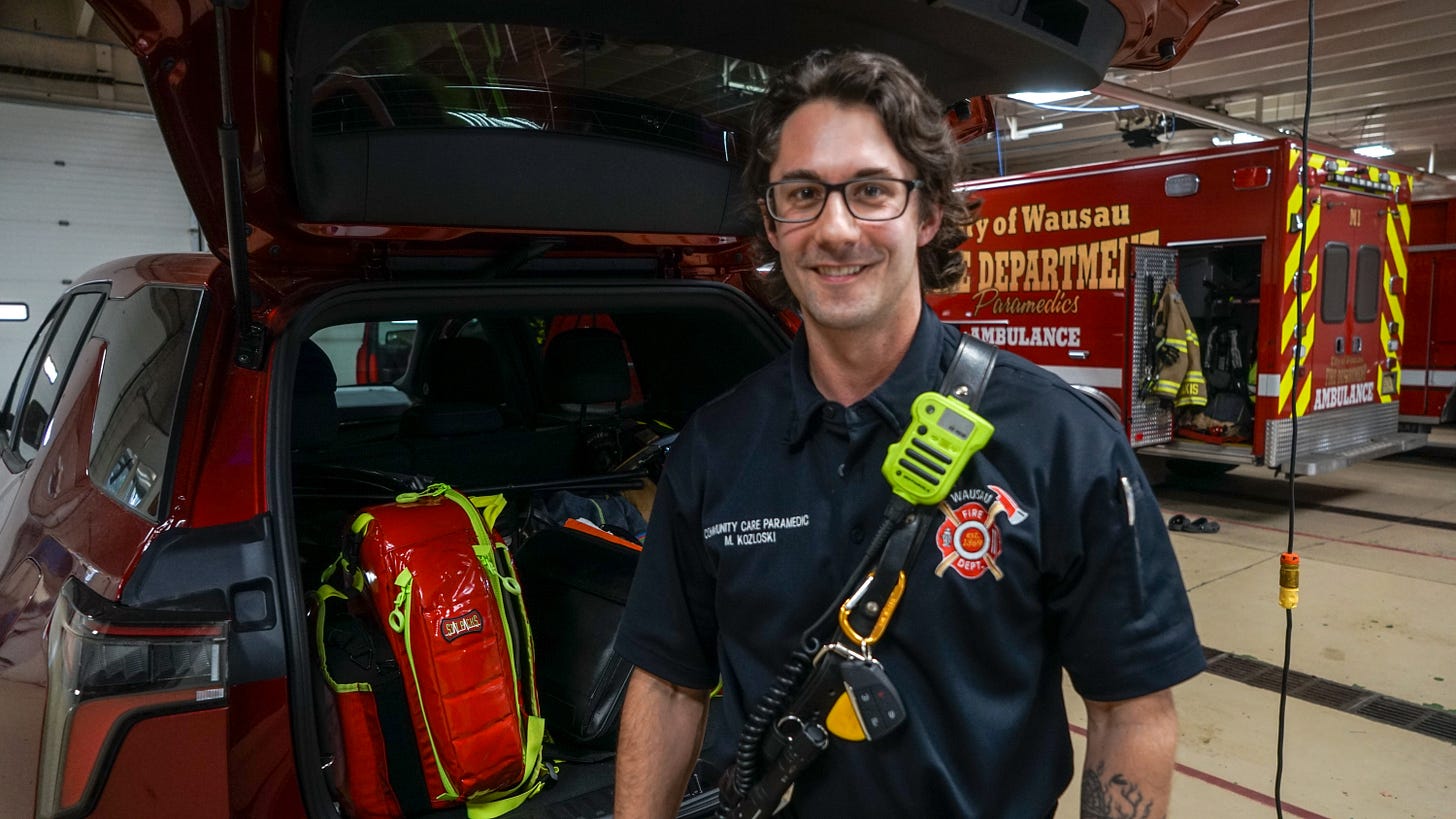Wausau's Community Paramedic Program is even more impressive up close
The Wausonian rode along with Matt Kozloski - his relationship with patients is hard to capture in numbers (but the numbers are really good).

A man we’ll call Fred seemed almost apologetic as he explained how much he received from the VA every month. “It might seem like a lot, but the expenses add up,” he explains.
We assure him that a big over $1,400 is indeed not a lot of money to live on.
Fred is a veteran. He walks from his small apartment in the building at the corner of Grand Avenue and Thomas Street, past the Community Partners Campus, past the food pantry he more than qualifies for, to Kwik Trip to buy food for himself. He sleeps on a broken bed.
But that’s about to change.
Fred is one of a few dozen people Matt Kozloski, the Wausau Fire Department’s Community Paramedic, helps on a regular basis.
On paper, the program makes sense. The setup is this: The Wausau Fire Department increasingly handles more calls for emergency medical services every year, and fewer fire calls.
Some of those calls are from so-called “frequent flyers” (language Kozloski tells me people don’t use any more): people who call 911 multiple times. Many of those calls are preventable for reasons we will explain later.
The idea of the community paramedic is that someone like Kozloski can work with them on a non-emergency basis and figure out some of their problems to prevent them from becoming emergency calls.
Those calls are expensive - both from the department side, from the hospital’s emergency department rooms (I learned hospitals no longer use ER) and from the patient’s perspective.
On paper, it should be a win-win-win.
Getting a chance to see the program first-hand by riding along with Kozloski on a Thursday afternoon, it’s even more effective than the numbers would show.
Like outreach coordinator Tracy Rieger is an advocate for the homeless, Kozloski is an advocate for another segment of the population who have fallen through the cracks. We met with three of his patients - one of them homeless, one in Section 8 housing and a third with a disability.
Kozloski - and you perhaps couldn’t find a better person for the job - is doing more than saving everyone money (although he is definitely doing that). He’s helping people who are falling through the cracks in the medical system.
It’s something you can’t get from a report or a presentation, or a handful of email questions or a phone call.
Sometimes as a journalist, you have to engage in the lost art of actually showing up and riding along.
And that’s what The Wausonian did - spending the day with Kozloski showed how important this program is and the results it’s having, beyond just the numbers.
The numbers
As stated earlier, the numbers are impressive. Of the enrolled patients, before the program started those patients were responsible for 209 emergency calls. After the program, that number dropped to 74.
Keep reading with a 7-day free trial
Subscribe to The Wausonian | Independent Wausau News to keep reading this post and get 7 days of free access to the full post archives.


